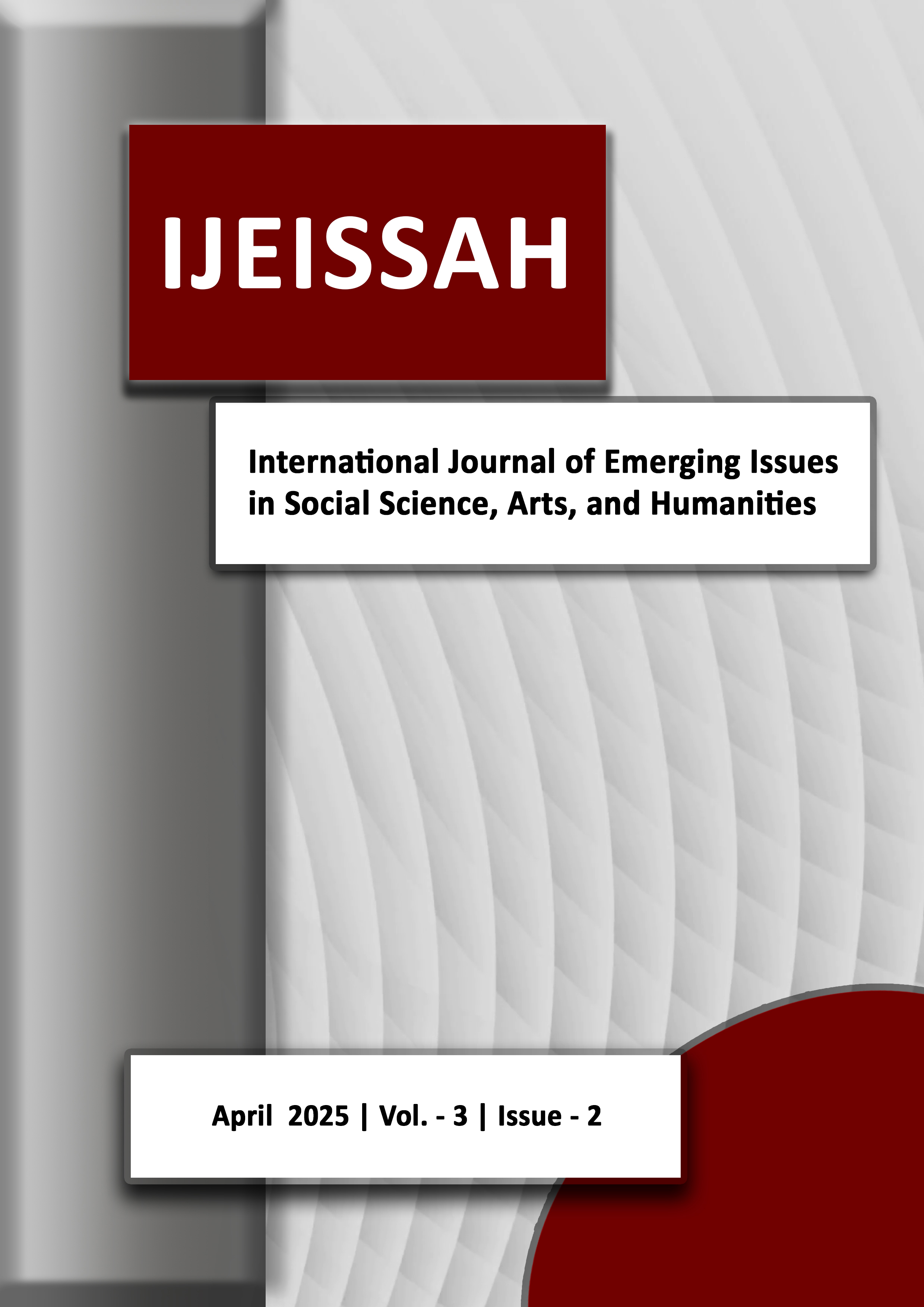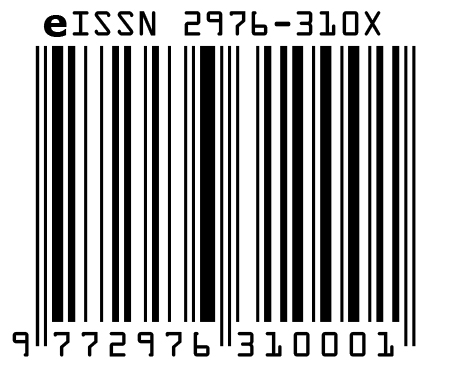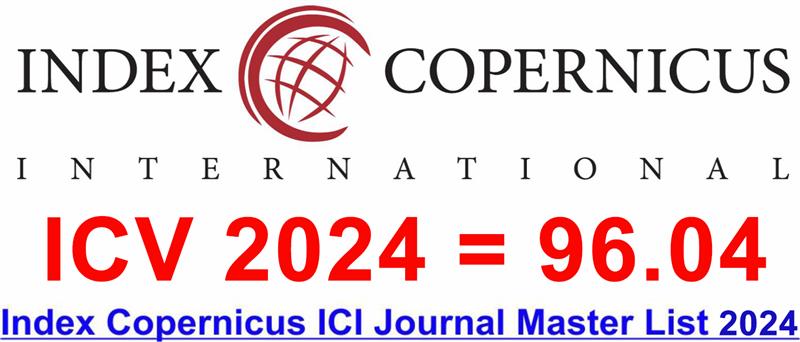Challenges in Developing Reading Skills for Grade 1 ESL Learners in Oman
DOI:
https://doi.org/10.60072/ijeissah.2025.v3i02.005Abstract
Surveying the quadrilateral challenges that Omani Grade 1 learners encounter as they emerge into English reading in an ESL context is the focus of this paper. This is to identify reading problems such as vocabulary deficiency, phoneme consciousness, and, indeed, the inability to distinguish in the texts the strains of the English language they have not encountered before. There are other factors related to social and education rather than language. Often, these students receive little positive reinforcement at home or in the community because Oman is not an English-speaking country and English is not spoken outside the classroom. Also, the practical approaches to teaching early reading in the second language might be consistent with methods other than traditional approaches to learning; this could pose a problem. This study focuses on the appropriateness of an ESL curriculum that will address the needs of Omani Grade 1 learners as well as the use of phonetic training, vocabulary development, and culturally sensitive learning resources in teaching. Its direction is to contribute information about its results to the development of educators and educational policymakers to establish a supportive learning environment. The proposed study will enhance English literacy among Omani learners to enhance a customised teaching-learning environment that addresses the linguistic and cultural context for learners to improve their sustainable success in learning English.
Keywords:
Cultural Influence on Learning, ESL Reading Challenges, Omani Grade 1 Learners, Phonological Awareness, Second Language AcquisitionReferences
Abu Abeeleh, T. W., Al-Ghazo, A., & Al-Sobh, M. (2021). Reading comprehension problems encountered by EFL students at Ajloun National University. International Journal of Language and Linguistics, 8(1), 6-15.
Ahmed, K. M. (2023). A Descriptive Study Recording and Analyzing the First Language (Arabic) Interference Impact on Arab Learners Who Study English as a Second Language (ESL) during Question Formation. London Journal of Research In Humanities and Social Sciences, 23(14), 43-63.
Al-Habsi, T., Al-Busaidi, S., & Al-Issa, A. (2022). Integrating technology in English language teaching through a community of practice in the Sultanate of Oman: implications for policy implementation. Educational Research for Policy and Practice, 21(1), 43-68. DOI: https://doi.org/10.1007/s10671-021-09291-z
Al-Issa, A. S. (2020). The language planning situation in the Sultanate of Oman. Current Issues in Language Planning, 21(4), 347-414. DOI: https://doi.org/10.1080/14664208.2020.1764729
Al-Sukaiti, N. (2023). Measuring the Impact of Synthetic Phonics Teaching on the Acquisition of Upper and Lowercase Recognition Skills: Evidence from Oman. Research Highlights in Language, Literature and Education Vol. 4, 162–185. https://doi.org/10.9734/bpi/rhlle/v4/9826F
Al Shyiab, M. M., Wan Sulong, M. W., Abdul Jabar, A. M., & Mohd Kasim, M. Z. (2023). The role of syntax in the translation of compound-complex sentences between Arabic and English. International Journal of Academic Research in Business and Social Sciences, 13(5), 1113-1129. DOI: http://dx.doi.org/10.6007/IJARBSS/v13-i5/16877
Al-Sinani, S. K. (2023). An investigation of professional communities amongst those responsible for English teacher development in Oman (Doctoral dissertation, University of Glasgow).
DOI: https://doi.org/10.5525/gla.thesis.83700
Al Malki, M., Al Rushaidi, I., & Al Saidi, A. (2024). Omani English Classroom Environment: PreService English Language Teachers’ Perspectives. International Journal of Learning, Teaching and Educational Research, 23(3), 527-547. DOI: https://doi.org/10.26803/ijlter.23.3.26
Almelhes, S. (2024). Enhancing Arabic language acquisition: Effective strategies for addressing non-native learners’ challenges. Education Sciences, 14(10), 1116.
DOI: https://doi.org/10.3390/educsci14101116
Almohawes, M. (2024). Second Language Acquisition Theories and How They Contribute to Language Learning. World Journal of English Language, 14(3), 181-181. https://doi.org/10.5430/wjel.v14n3p181
Al-Kinany, T., Al-Abri, A., & Ambusaidi, H. (2022). Arab EFL Learner Perceptions of English Phonemes: A Cross-Language Phonetic Interference. English Language Teaching, 15(2), 67-77. DOI:10.5539/elt.v15n2p67
Al-Qahtani, A. A. (2020). Investigating Metacognitive Think-Aloud Strategy in Improving Saudi EFL Learners' Reading Comprehension and Attitudes. English Language Teaching, 13(9), 50-62. DOI: https://doi.org/10.5539/elt.v13n9p50
Chinnathambi, K., Orabah, S. S., Rani, S. S., & Anandan, L. (2023). Omani Students’ Satisfaction with Independent Learning Tools during Covid-19. Arab World English Journal (AWEJ) special issue on Communication and Language in Virtual Spaces, January 2023:363-373 https://awej.org/wp-content/uploads/2023/01/25.pdf
Hossain, K. I. (2024). Reviewing the role of culture in English language learning: Challenges and opportunities for educators. Social Sciences & Humanities Open, 9, 100781. DOI: https://doi.org/10.1016/j.ssaho.2023.100781
Lai, H. K., & Mukundan, J. (2023). The effectiveness of graphic organisers for improving reading comprehension in ESL learners: A systematic literature review.
Imtiaz, M., Hassan, K. H. U., & Akmal, F. (2023). Analyzing Spelling Errors Committed By English as a Second Language (ESL) Learners At Secondary School Level. Journal of Social Sciences Review, 3(2), 181-189. DOI: https://doi.org/10.54183/jssr.v3i2.246
Krüger, M. (2023). Theory of Second Language Acquisition. In Media-Related Out-of-School Contact with English in Germany and Switzerland: Frequency, Forms and the Effect on Language Learning (pp. 51-93). Wiesbaden: Springer Fachmedien Wiesbaden. DOI: https://doi.org/10.1007/978-3-658-42408-4_4
Liu, S., & Reynolds, B. L. (2024). A systematic review of English-as-a-foreign-language vocabulary learning activities for primary school students. International Review of Applied Linguistics in Language Teaching, (0). DOI: https://doi.org/10.1515/iral-2023-0193
Lim, W. M. (2024). What is qualitative research? An overview and guidelines. Australasian Marketing Journal, 14413582241264619. DOI: https://doi.org/10.1177/14413582241264619
Nawi, N. S. M., & Nor, N. A. A. M. N. (2023). The Challenges in the Teaching of English Literature: A systematic review. Journey: Journal of English Language and Pedagogy, 6(1), 130-147. DOI: https://doi.org/10.33503/journey.v6i1.619
Teng, M. F. (2023). The effectiveness of multimedia input on vocabulary learning and retention. Innovation in language learning and teaching, 17(3), 738-754. DOI: https://doi.org/10.1080/17501229.2022.2131791
Vicari, S., & Kirby, D. (2023). Digital platforms as socio-cultural artifacts: developing digital methods for cultural research. Information, Communication & Society, 26(9), 1733-1755. DOI: https://doi.org/10.1080/1369118X.2022.2027498
Wutich, A., Beresford, M., & Bernard, H. R. (2024). Sample sizes for 10 types of qualitative data analysis: an integrative review, empirical guidance, and next steps. International Journal of Qualitative Methods, 23, 16094069241296206. DOI: https://doi.org/10.1177/16094069241296206
























